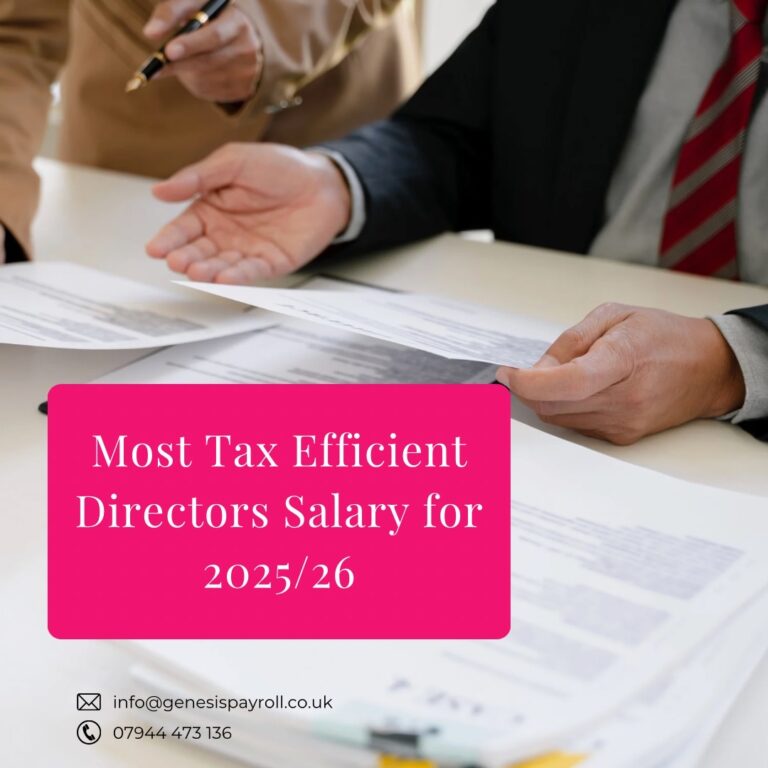The optimal salary strategy depends on whether your company qualifies for the Employment Allowance, which offsets employer National Insurance contributions (NICs).
Option 1: Sole Director Without Employment Allowance
If you’re the sole employee/director, your company isn’t eligible for the Employment Allowance.
- Salary: £5,000 per annum (£416.66/month) — below the employer NIC threshold.
- Dividends: Up to £45,270 to remain within the basic rate tax band.
Tax Implications:
- Salary is covered by the personal allowance.
- First £500 of dividends is tax-free (dividend allowance).
- Remaining £37,200 of dividends taxed at 8.75%, resulting in a tax liability of £3,255.
Note: This approach avoids NICs but doesn’t earn National Insurance credits towards your state pension.
Option 2: Director with Employment Allowance
If your company has at least one other employee, you’re likely eligible for the Employment Allowance.
- Salary: £12,570 per annum (£1,047.50/month) — fully utilises the personal allowance.
- Dividends: Up to £37,700 to stay within the basic rate tax band.
Tax Implications:
- Salary is tax-free due to the personal allowance.
- First £500 of dividends is tax-free.
- Remaining £37,200 of dividends taxed at 8.75%, resulting in a tax liability of £3,255.
Note: This strategy earns NIC credits and offers greater corporation tax savings due to the higher salary being a deductible expense.
Summary Comparison
| Scenario | Salary (£) | Dividends (£) | Tax Liability (£) | NIC Credits | Corporation Tax Savings |
|---|---|---|---|---|---|
| Sole Director (No Allowance) | 5,000 | 45,270 | 3,255 | No | £1,250 |
| Director with Employment Allowance | 12,570 | 37,700 | 3,255 | Yes | £3,142.50 |
Corporation tax savings are based on a 25% rate.
Additional Considerations
- Pension Contributions: Recent reforms limit employer contributions to 100% of an employee’s salary for Personal Retirement Savings Accounts (PRSAs). Directors with low salaries may need to explore occupational pension schemes for higher contributions.
- Dividend Tax Rates: Dividends above the £500 allowance are taxed at 8.75% (basic rate), 33.75% (higher rate), and 39.35% (additional rate).
- National Insurance Thresholds: Employer NICs apply above £5,000, and employee NICs above £12,570.
- State Pension Eligibility: To earn NIC credits for the state pension, ensure your salary is above the Lower Earnings Limit (£6,500 for 2025/26).
Conclusion
For most directors, especially those eligible for the Employment Allowance, paying a salary of £12,570 combined with dividends up to £37,700 is the most tax-efficient strategy for the 2025/26 tax year. This approach maximises personal allowances, earns NIC credits, and offers substantial corporation tax savings.
However, individual circumstances vary. It’s advisable to consult with a tax professional to tailor the strategy to your specific situation or visit HMRC for more information Director information hub: Income Tax and National Insurance – GOV.UK.

